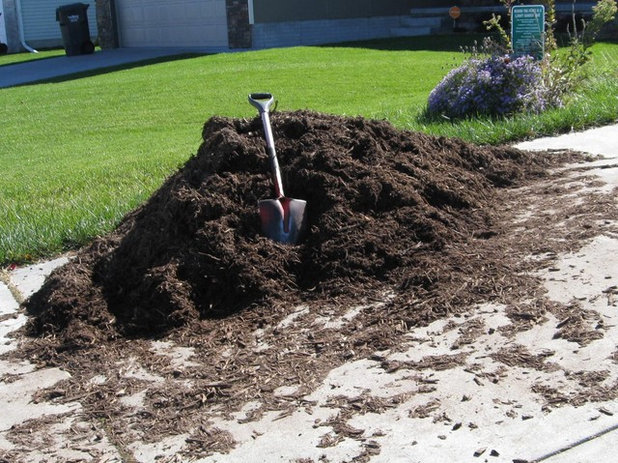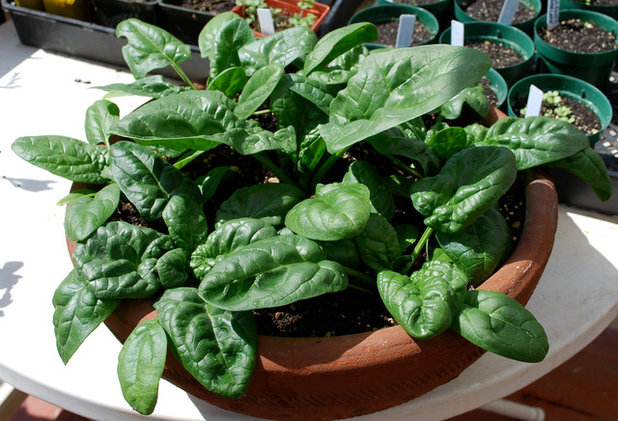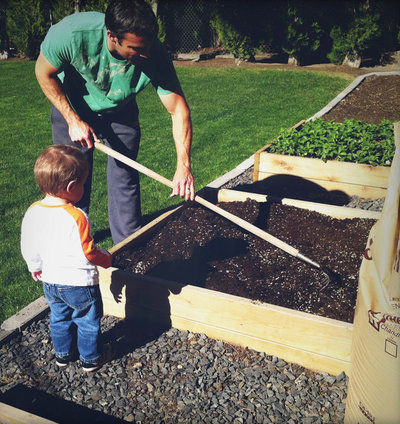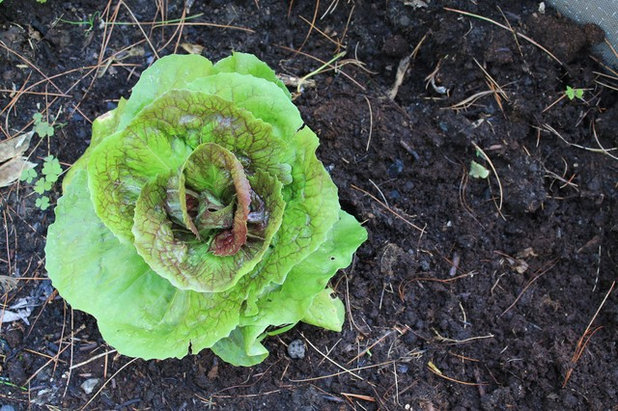If there’s one thing that makes a difference between garden success and failure, it’s soil. Plants need fertile, well-structured soil to grow and thrive. Edible gardens in particular require supercharged soil. With their shallow root systems and fast growth, vegetables tend to drain nutrients faster than most ornamentals. Food-producing gardens also need soil that’s free of potentially harmful contaminants.

Benjamin Vogt / Monarch Gardens
Despite its importance, soil is one of the most misunderstood aspects of gardening. Soil isn’t dead, homogenous “dirt.” Rather, it’s a diverse living habitat that contains a staggering amount of beneficial bacteria, fungi, earthworms, insects and other organisms. This soil ecosystem helps to break down nutrients from organic matter and, in turn, feeds your plants, which feed you. So how do you get good soil?
Types of Soil
Topsoil. Topsoil is the existing soil in your growing space — the stuff that’s sitting under your backyard lawn. Topsoil is an important natural resource that supports much life on the planet, from meadows to forests and beyond. It’s also a resource that in some areas has been damaged by development and poor agricultural practices. While the topsoil in your garden is often plentiful, it isn’t necessarily the best option for growing food, especially in an urban setting. Topsoil may lack nutrients, have poor drainage, and can potentially be contaminated with pollutants and heavy metals. For dedicated and experienced gardeners, testing your topsoil for toxins and adding lots of organic matter can often remediate the damage. But in some cases, it can take years to restore the soil’s health.
Purchased soil. A worthwhile option for home gardeners is to buy high-quality organic garden soil from a reputable local source. The upfront costs are usually reasonable, and once your garden beds are filled with good soil, it will last for many years as long as you add a bit of compost once or twice a year. Common ingredients in purchased soil include compost, sand and aged manure. This soil can be used in raised beds, which provide a rich environment for growing vegetables.
Research organic soil suppliers in your area and tell them that you are planning to plant a vegetable garden. Ask suppliers whether their soil is tested for heavy metals and fecal coliforms. Don’t scrimp on soil. Buy the best stuff you can find; the results will be worth it.
It’s delivered by the “yard,” or 27 cubic feet, and typically arrives as a big pile. Instead of paying someone to shovel the soil into your beds, consider setting up a garden work party and invite friends with strong backs to help get the job done. Once your beds are full, wait a week or two before planting to allow the new soil to settle and cool down, literally — good topsoil is often warm upon arrival due to high microbial activity.

Steve Masley Consulting and Design
Potting medium. Potting medium is specially designed for growing edibles in containers. Compared with topsoil, it tends to be lighter in weight and better at retaining moisture. Technically, potting medium isn’t soil at all but is made from ingredients plants are happy to grow in.
Bagged potting medium is easy to find at garden supply and home improvement stores. Look for an organic formula that is enriched with compost rather than with chemical fertilizers. Besides being unfriendly to the environment, chemical fertilizers tend to make vegetables grow extremely quickly at first, then suddenly peter out, leading to poor long-term results. Try to find a brand that’s free of peat moss, a nonrenewable resource. Coconut coir is a somewhat more sustainable alternative. Other common potting medium ingredients include compost, aged manure, vermiculite and perlite (made from heated volcanic glass).
Learn more about potting medium
 Testing Your Soil Professional soil testing for contaminants.
Testing Your Soil Professional soil testing for contaminants. If you’re growing plants in your native topsoil — or even if you’re using raised beds that are connected to the soil table — testing your soil for heavy metals such as lead is important, particularly if you have an older home or are near a busy road. Find a local company that does professional soil testing, follow its instructions and ask for its help interpreting the results.
Soil testing can be expensive, but the peace of mind of knowing that your soil is safe is worth it, especially if you’re gardening with kids, who can be especially vulnerable to soil contaminants. The ideal time to get your soil tested is before building a new garden, but even if you’ve been growing in the same space for years, testing is a good idea. If your soil is high in heavy metals, plant edibles only in containers that aren’t connected to the soil table and are protected from traffic.
Home soil testing for pH. Your soil’s pH level — its acidity or alkalinity — affects plants’ ability to absorb nutrients. Most vegetables will best absorb nutrients at pH levels between 6 and 6.5. If your soil is too acidic or too alkaline, you may experience poor growth. Although home tests are not highly accurate, they are inexpensive and easy to find at garden supply stores, and can give you a good baseline. If your pH level is off-balance, add lime or sulfur according to package directions. Use a home pH test each year. Fall is the ideal time to test your garden’s pH level, as it will give you time to allow lime to break down and absorb into the soil before spring.
Home tests also exist for nitrogen, potassium and phosphorus — the three most important soil nutrients — but they are often difficult to use and not especially accurate. Feel free to experiment with these tests if you’re inclined.

Falon Land Studio LLC
Maintaining Your SoilOnce your soil is in place, maintain it by raking 1 to 2 inches of homemade or purchased finished compost into your beds early each spring, a couple of weeks before planting. In most cases, compost needs to be applied only once a year, though if you are planting year-round or having soil fertility issues, you might consider an additional application in the fall.
Manure can be a powerful way to boost fertility, but be sure to use aged manure that has been tested for pathogens such as E. coli, and look for a source that’s free of antibiotics and pesticides. Manure can be applied up to once a year in the fall or spring. Dig manure under the surface of your soil rather than spreading it on top. Different types of manure have different nutrient levels; speak with a garden supply center or experienced gardener in your area to find the best sources and types of manure for your needs. Gardens with reasonably healthy soil may not need manure.
To boost your soil’s nutrient levels and supply trace minerals, sprinkle some slow-release all-purpose granulated fertilizer on your soil at the time of planting. If you’re growing in containers, follow up with regular additions of liquid organic fertilizer in order to maintain fertility.
Vegetables need healthy, fertile and safe soil to feed you. Start with good soil and maintain it, and your garden will reward you with delicious harvests.





